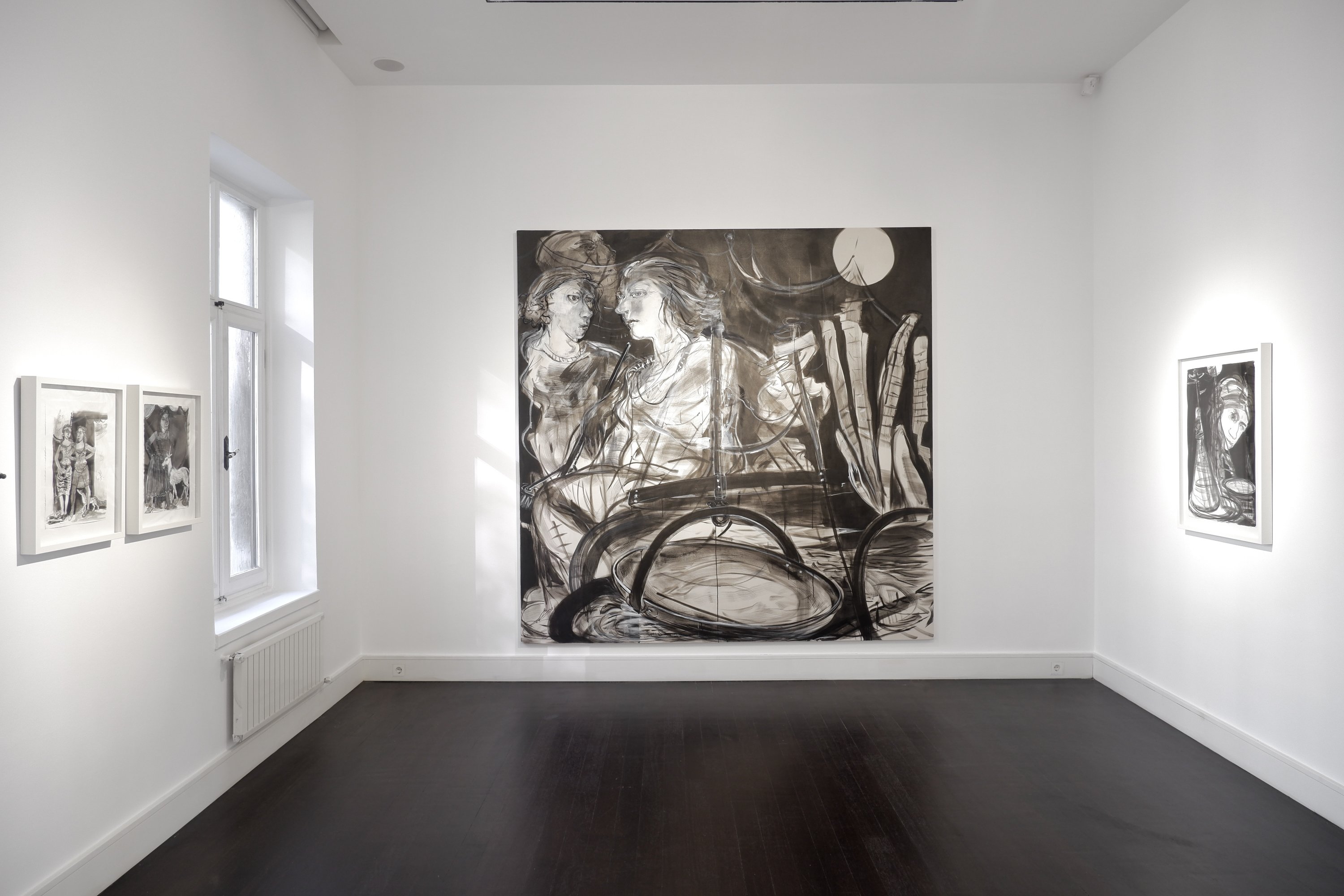© Turkuvaz Haberleşme ve Yayıncılık 2025
Vision Art Platform welcomes British artist Anita Taylor with her latest exhibition, "Moonraker." On view from Nov. 29 to Dec. 31 at Akaretler No:35 in Istanbul, the exhibition weaves a profound exploration of identity, narrative and human experience through drawing and painting.
Taylor’s work brings together contrasts – fact and fiction, memory and forgetting, presence and absence – creating intricate visual narratives. Her drawings and paintings are deeply rooted in feminist thought, and she reinterprets historical and mythological stories, reframing them through a female gaze. Inspired by artists like Artemisia Gentileschi and Kathe Kollwitz, Taylor’s works resonate with themes of empowerment, vulnerability and the enduring complexity of gender and identity.

For Anita Taylor, drawing is not merely a medium but an act of encounter – a way to question and reflect on the world and the self. Since the 1980s, her works have examined the dynamics of observation, capturing fleeting moments of clarity and distortion. Her Glance and Vestiges series, rendered in charcoal, explores the profound experience of self-recognition, akin to seeing one’s reflection in a mirror. The Witness series extends this introspection, addressing themes of mortality and the fragility of human existence while evoking the historical tradition of art as a means of bearing witness.
Taylor’s paintings reinterpret classical and mythological narratives through a feminist lens. Her A Mon Seul Desir series reimagines the iconic Dame a la Licorne tapestries, critiquing their medieval symbolism and transforming them into modern commentaries on female agency. Similarly, her works on Tristan, Yseut, Hercules, and Deianira draw connections between the allegorical power of myths and contemporary issues of gender, identity and representation.
By centering female protagonists, Taylor’s works resonate with a lineage of feminist artists, creating a dialogue between past and present. This perspective challenges traditional patriarchal readings of history and invites viewers to consider enduring questions of power, representation and societal structures.
The Moonraker series, conceived during the global pandemic, captures an atmosphere of dislocation and transience. Its title references a 16th-century tale of Wiltshire smugglers who feigned innocence by claiming they were collecting cheese reflected in the moonlit waters. This story of deception and truth is a metaphor for Taylor’s exploration of precarious human experiences, where boundaries between reality and fiction blur.

The moonlit scenes and veiled structures in these works evoke a sense of suspension and impermanence, reflecting the fragile nature of memory and the human condition. The interplay of light and shadow, concealment and revelation, imbues these pieces with a theatrical quality, drawing the viewer into a deeply immersive narrative.
Exhibiting Moonraker in Istanbul adds layers of meaning to Taylor’s work. A city where the East meets the West and the past merges with the present, Istanbul offers a poignant context for her themes of duality and storytelling. Taylor’s Testimony: Aşıklı Höyük series, rooted in Anatolian history, gains new resonance in this setting, connecting ancient practices of witnessing to contemporary expressions of identity and narrative.
Moonraker invites viewers to engage with the complexities of observation and representation. Anita Taylor’s work oscillates between the personal and the universal, reminding us of our roles as both witnesses and participants in the unfolding stories of humanity.
